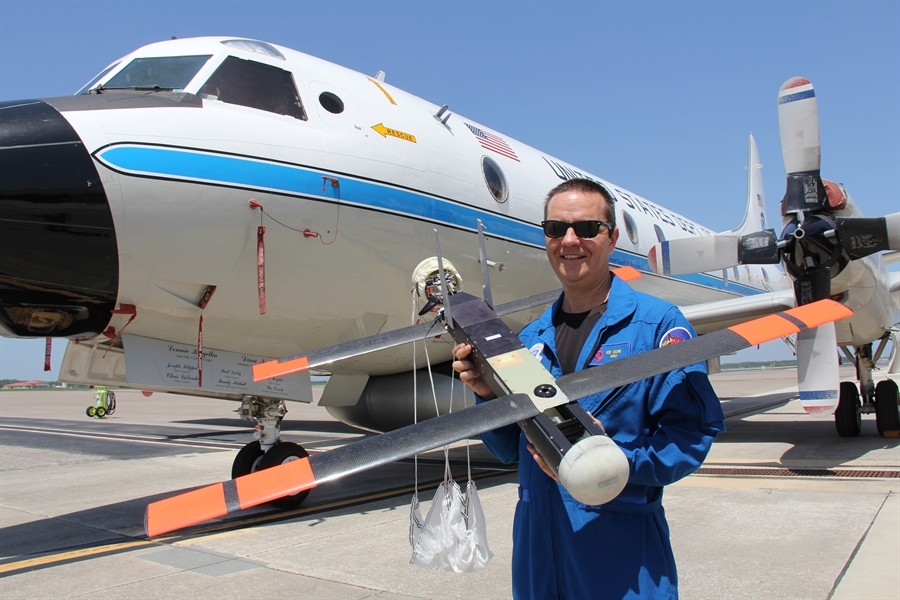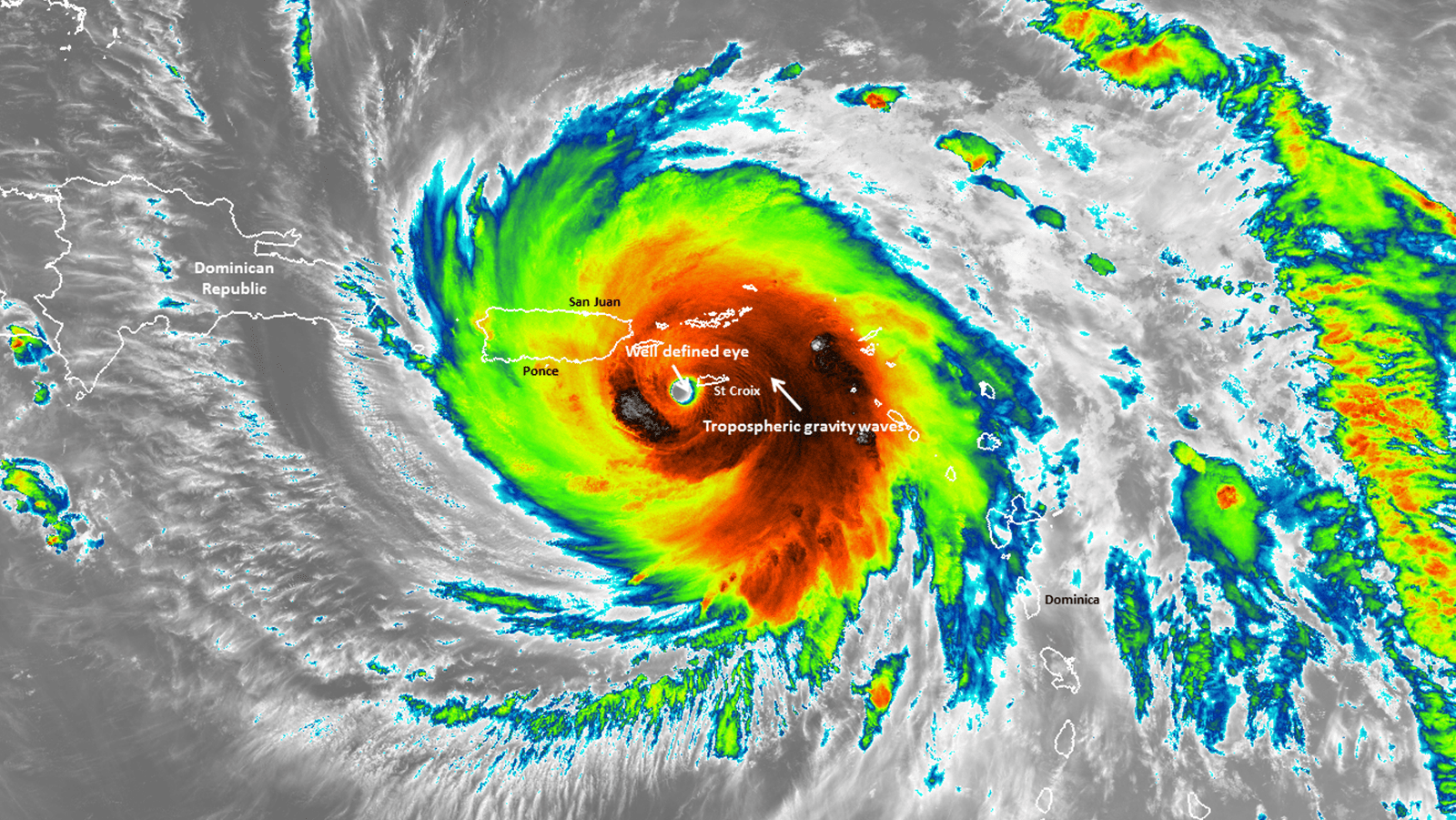Observations obtained by the Coyote small Uncrewed Aircraft System led to a significant improvement in the analyses of Hurricane Maria’s (2017) position, intensity, and structure, according to new research published in the journal Monthly Weather Review. The study by scientists with the University of Miami’s Cooperative Institute for Marine and Atmospheric Studies and Atlantic Oceanographic and Meteorological Laboratory (AOML) highlights how the Coyote’s novel near-surface measurements helped to more accurately depict Hurricane Maria’s inner core, demonstrating their ability to improve forecasts.
Hurricane Maria left a trail of destruction on its path through the Caribbean in September 2017 as a deadly major storm. During missions of NOAA’s P-3 Hurricane Hunter aircraft, AOML scientists deployed six Coyote drones in the eye and surrounding eyewall of Maria to test their ability to sample the lowest reaches of the hurricane environment.

Measurements from this turbulent region where the ocean and atmosphere collide are critically important but rarely observed, as conditions found there are too dangerous for crewed aircraft. The diminutive Coyote drones, weighing only 13 pounds, collected wind, temperature, humidity, and atmospheric pressure data—typically several times every second for periods up to an hour—at altitudes as low as 300 feet above the ocean surface.
These high-resolution data were added to NOAA’s Hurricane Weather Research and Forecasting model, the first ever inclusion of such observations, using the Hurricane Ensemble Data Assimilation System developed at AOML. To improve their impact on model forecasts, the authors devised a quality-control technique to identify and remove outlier observations. Additional improvements to forecasts were achieved by assimilating the Coyote measurements at the high frequency rate of every 5 minutes rather than every 6 hours.
The impact of quality-controlled Coyote data ingested into the model at 5-minute intervals was significant. Error reductions were noted for all observation types based on statistics computed at the locations of both the Coyote and non-Coyote observations.
The Coyote’s measurements of the seldom sampled atmosphere closest to the ocean were key to providing more accurate depictions of Hurricane Maria’s intensity and structure as the storm plowed through the Caribbean. These unique observations hold the potential to improve future forecasts to better protect life and property.
Reference:
Aksoy, A., J.J. Cione, B.A. Dahl, and P.D. Reasor, 2022: Tropical cyclone data assimilation with Coyote uncrewed aircraft system observations, very frequent cycling, and a new online quality control technique. Monthly Weather Review, 150(4):797-829, https://doi.org/10.1175/MWR-D-0124.1.
